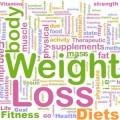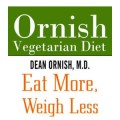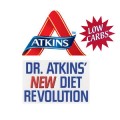Benefits of High Fiber in Diet
Eat Your Fiber Total fiber refers to the dietary fiber that occurs naturally in foods, as well as the functional fiber (fiber that provides health benefits) that may be added to food. Dietary fiber is only found in plant foods. Insoluble Fiber Fibers are composed primarily of the non-starch polysaccharides cellulose, hemicelluloses, pectins, gums, and mucilages. Cellulose, hemicelluloses, and lignins form the structural part of the plant cell wall in vegetables and whole grains. Bran layers form the outer covering of all seeds; thus, whole grains (those in which the bran and outer layers have not been removed in processing) are good sources of fibers. Because of their chemical structure, these fibers do not dissolve in water. Therefore, they are often referred to as insoluble fibers . Soluble Fiber In contrast to the insoluble fibers, pectins, gums, mucilages, and some hemicelluloses dissolve easily in water and are classified as soluble fibers . In water, they become viscous (gel-like) in consistency. This property makes them useful for thickening jams, jelly, yogurt, and other food products. They also occur naturally inside and around plant cells in oat bran, many fruits, legumes, and psyllium. Fiber Help to Protect Against Diabetes Fiber has several effects on digestion, some beneficial, and some detrimental. One beneficial effect is that fiber tends to slow down the rate of digestion of food, leading to a more gradual emptying of the food from the stomach into the small intestine. This means that there is less likelihood of large quantities of glucose (the major breakdown product of carbohydrate) being absorbed rapidly from the small intestine into the blood and therefore a lower chance of an ‘insulin surge’. Insulin is the hormone that is released when glucose is absorbed from the small intestine. It is possible that by slowing stomach emptying, fiber helps avoid the situation where the body has...
recent posts
Comparing the Effectiveness of Various Weight-Loss Diets...
Posted by Kim on Jul 28, 2013The diet plans described above have been used by millions of people and which plan is “best” has long been debated by both scientists and the lay public. In 2005, Dansinger et al. reported the results of a study that compared weight loss in obese subjects (average BMI of 35) who followed one of the four diet plans previously described, providing a scientific basis for answering the question, “Which weight-loss diet is the best?” In those who completed the study, weight loss after one year was about 3 percent of body weight (~ 5–7 lb [~ 2–3 kg]) regardless of the diet plan. The more restricted plans, Atkins and Ornish, were harder for participants to adhere to (i.e., higher drop-out rate). In an effort to determine which of several popular diets helped people keep weight off, researchers at Tufts-New England Medical Center in Boston assigned a group of volunteers to one of four diets: Atkins, Dean Ornish, Weight Watchers, and Zone diet. The found that regardless of the initial amount of weight lost, after one year, losses were only about 5% in all programs, meaning that these diets were all equally ineffective in helping most people keep weight off. These results were published in 2005 in the prestigious Journal of the American Medical Association. All the plans studied were low in kilocalories (energy), although kilocalories were not directly counted in any of the plans. It is the macronutrient composition that varied in these weight-loss plans. For the obese, sedentary individual, the restriction of energy and the length of the energy restriction seem to be more important that the carbohydrate,...
Ornish Diet
Posted by Kim on Jul 28, 2013Dr. Dean Ornish’s Eat More, Weigh Less Dr. Dean Ornish’s Ornish diet (Eat More, Weigh Less diet) focuses on eating a diet of plant products low in fat, oils, and emphasizes high-fi ber carbohydrate to achieve weight loss and better health without feelings of deprivation and hunger. This diet is very low in fat, approximately 10 percent of total energy intake, and moderate in protein, mostly from plant sources. It also emphasizes stress reduction techniques and light exercise. Dr. Ornish presents his Eat More, Weigh Less diet as more of a spectrum of choices than a set of hard and fast rules. He believes that because people have many different goals, from moderate weight loss to actual heart disease reversal, no one set of dietary rules will fit everyone. He also emphasizes overall lifestyle change, not just through what a person eats but also through stress reduction, moderate exercise, and if applicable, quitting smoking. Caloric intake is not counted; rather, individuals are instructed to “eat when hungry, stop when full,” but energy intake is likely limited due to the low-fat, high-fiber content of the diet. Foods are generally divided into one of three groups: consume in large quantities, consume in moderation, and avoid. Beans, legumes, whole grains, fruits, and vegetables are emphasized. Nonfat dairy products and nonfat or low-fat commercially prepared meals are to be consumed in moderation. Foods to be avoided include all kinds of meat, poultry, fish, low-fat and regular dairy products, oils, sugars, alcohol, nuts, seeds, olives, and avocadoes. Read about Atkins Diet, Zone Diet, Ornish Diet & Weight Watchers << Previous < 1 | 2...
Weight Watchers
Posted by Kim on Jul 28, 2013Weight Watchers is the largest commercial weight-loss program in the world. Each week, over a million members attend over 40,000 Weight Watchers meetings around the world, which are run by more than 10,000 leaders—each of whom has lost weight on the Weight Watchers program. Weight Watchers company was established by Jean Nidetch in 1963. The Weight Watchers program is based on calorie and portion control while eating regular food, exercise, and behavior modification. The fundamental message of the Weight Watcher program is ‘‘move more, eat less.‘‘ There is nothing unique about this approach to dieting. What distinguishes the Weight Watchers program are the tools it provides members to stay motivated to meet these goals. Weight Watchers meetings are a combination of nutrition education, behavior modification, and motivational psychology. Weight Watchers diet plans have evolved over the years. The current system gives members a choice of two plans, he Flex Plan or the Core Plan. The Flex Plan assigns a point value per serving to every food. Points are based on the amount of calories, dietary fiber, and fat in the food. One point is roughly equal to 50 calories. A point target is determined based on current weight. Points can also be earned by exercising, and these points can be used to add more food to the diet plan or to accelerate the rate of weight loss. The Weight Watchers diet reduces caloric intake indirectly through the point system, rather then by a direct counting of calories. The diet is low in fat and high in fiber. The hallmark of the Weight Watchers program has been its support system,...
Zone Diet
Posted by Kim on Jul 28, 2013The Zone diet is developed by Barry Sears to promote fat loss and weight loss, but he also claims that the diet brings about substantial health benefits. This diet is highly structured. Participants in the Zone diet are instructed that every meal and every snack should consist of 40%carbohydrates, 30%protein, and 30%fats. This produces what Sears considers the ideal ratio of protein to carbohydrate. The protein to carbohydrate ratio of .75, Sears says, allows the body to function at optimal level. He refers to this optimal functioning as being ‘‘in the Zone.’’ Such a macronutrient distribution results in the diet being relatively low in carbohydrates and high in proteins. The Zone diet is less concerned with people reaching a specific weight than with reducing body fat. The goal is for men to have only 15% body fat and women 22% body fat. The amount of kilocalories in the diet are not restricted directly (i.e., caloric intake is not counted); rather, a certain number of carbohydrate, protein, and fat “blocks” are recommended. The diet usually ranges from 1,000 to 1,600 kcal daily. The Zone diet emphasizes the glycemic effect of carbohydrate foods, with an emphasis on consuming those that do not produce a rapid rise in insulin. The diet also emphasizes monounsaturated fats because of their influence on the production of eicosanoids, compounds made from unsaturated fatty acid that have hormone-like activity (e.g., prostaglandin). On the Zone diet, foods are either ‘‘good’’ or ‘‘bad.’’ Some ‘‘good’’ foods that are allowed (in the proper ratios) include: proteins: lean chicken, turkey, and other poultry, seafood, egg whites, and low-fat/non-fat dairy products. carbohydrates: fruit, non-starchy...
Atkins Diet
Posted by Kim on Jul 28, 2013Dr. Atkins introduced his Diet Revolution in 1972. The Atkins diet is based on restrictions of carbohydrates and focuses on eating mostly protein and fat, along with use of vitamin and mineral supplements. Throughout the diet, Dr. Atkins recommended drinking at least eight 8-oz. glasses of water each day to avoid dehydration and constipation. He also recommended daily intake of nutrients through a good multi-vitamin supplement. Finally, Dr. Atkins recommended getting plenty of exercise to speed weight loss. The Atkins diet consists of four distinct phases: induction, ongoing weight loss (OWL), pre-maintenance, and lifetime maintenance. The induction period is 14 days in length and carbohydrate intake is limited to 20 g/d. Twenty grams per day is an extremely low carbohydrate intake and a typical induction phase diet would include the elimination of all carbohydrate-containing foods except salad greens and similar vegetables (e.g., zucchini). Strict limits on carbohydrate intake result in a diet consisting of protein- and fat-containing foods such as meat, fish, poultry, and eggs. Fatty condiments (mayonnaise, sour cream, guacamole, and butter) are allowed in unlimited quantities. The Atkins theory is that these high fat foods enhance the flavor of meals, making the Atkins diet easier to maintain. There is no stated restriction on caloric intake (i.e., calories are not counted). Weight loss during the induction phase may be significant. The hypocaloric, very low carbohydrate intake results in ketosis, a metabolic adaptation to starvation. When carbohydrate is severely restricted, ketone bodies are produced as a result of the incomplete breakdown of fat. Brain and nervous tissues typically depend on carbohydrate for fuel but in its absence begin to...
Comparison of Popular Weight-Loss Diets...
Posted by Kim on Jul 28, 2013These days it’s hard to open a magazine without reading about the next miracle weight loss plan. Almost every popular magazine features nutrition advice, newspapers regularly run articles and TV and radio programs constantly discuss diet and health. Why are Diet Plans are so Popular? Diet plans are popular because everyone wanting to lose weight believes that the weight is the source of their dissatisfaction and thinks there is a miracle, a silver bullet, that will help them lose weight quickly. Americans spend an estimated $42 billion annually on weight loss foods, products, and services. With that much money at stake, it’s no surprise there are an overwhelming number of diet plans and other weight-loss products on the market. Although many weight-loss plans are available, we will be limited to a description and discussion of four diet plans that have been consistently popular for many years and have been compared in scientific studies. The one consistent feature is that the diet plans do not require “calorie counting;” however, the caloric intake of each diet plan is designed to be less than usual intake. A reduced energy intake is a critical element of any weight-loss diet plan. Table 1 Comparison of Weight-Loss Plans 1 Atkins Zone Carbohydrate Very low (20 g/d during the induction stage) to low (60 g/d) Low (40% of total energy intake) Fiber Low Moderate Protein Moderate to high, protein foods may also be high in fat High (30% of total energy intake), protein foods are low in fat Fat Moderate to high Moderate (30% of total energy intake), emphasis on monounsaturated fats Total calories Not counted but likely to...
Vitamin K (phylloquinones)
Posted by Kim on Jul 26, 2013The family of compounds known as vitamin K, or the quinones, include phylloquinones (vitamin K1) from plants and menaquinones (vitamin K2) found in fish oils and meats. Menaquinones also are synthesized by bacteria in the human colon. A synthetic compound, called menadione, can be converted to menaquinone in body tissues. Phylloquinone, the main dietary form of the vitamin, is the most biologically active form. Vitamin K is produced by bacteria in the gut. Part of our vitamin K supply comes from these bacteria. Newborns are given a vitamin K injection because they have “sterile” guts and consequently no vitamin K–producing bacteria. Vitamin K in Foods About 10% of the vitamin K absorbed each day comes from bacterial synthesis in the colon. The remainder comes from dietary sources. The following foods are rich in vitamin K Leafy, green vegetables e.g, kale, turnip greens, parsley, salad greens, cabbage, spinach, broccoli, peas, and green beans Grain products Vitamin K Requirements There is no official RDA for vitamin K, as there is usually sufficient supply from foods and intestinal bacteria. An average diet will usually provide at least 75–150 mcg., which is the suggested minimum, though 300 mcg. daily may be optimal. Absorption may vary from person to person, estimated from 20–60 percent of intake. Overall, suggested needs are about 2 mcg. per kilogram (2.2 pounds) of body weight. Newborns need about 1–5 mg. daily to prevent bleeding. Usually a 10 mg. injection is given at birth. Vitamin K is not available over the counter and must be given by prescription; for those who wish to consume more vitamin K, alfalfa tablets are...
popular posts
recent from Nutrition
Vitamin K (phylloquinones)
 The family of compounds known as vitamin K, or the quinones, include phylloquinones (vitamin K1) from plants and menaquinones (vitamin K2) found in fish oils and meats. Menaquinones also are synthesized by bacteria in the human colon. A synthetic compound, called menadione, can be converted to menaquinone in body tissues. Phylloquinone, the main dietary form of the vitamin, is the most biologically active form. Vitamin K is produced by bacteria in the gut. Part of our vitamin K supply comes from these bacteria. Newborns are given a vitamin K injection because they have “sterile” guts and consequently no vitamin K–producing bacteria. Vitamin K in Foods About 10% of the vitamin K absorbed each day comes from bacterial synthesis in the colon. The remainder comes from dietary sources. The following foods are rich in vitamin K Leafy, green vegetables e.g, kale, turnip greens, parsley, salad greens, cabbage, spinach, broccoli, peas, and green beans Grain products Vitamin K Requirements There is no official RDA for vitamin K, as there is usually sufficient supply from foods and intestinal bacteria. An average diet will usually provide at least 75–150 mcg., which is the suggested minimum, though 300 mcg. daily may be optimal. Absorption may vary from person to person, estimated from 20–60 percent of intake. Overall, suggested needs are about 2 mcg. per kilogram (2.2 pounds) of body weight. Newborns need about 1–5 mg. daily to prevent bleeding. Usually a 10 mg. injection is given at birth. Vitamin K is not available over the counter and must be given by prescription; for those who wish to consume more vitamin K, alfalfa tablets are a good source. Vitamin K Primary Functions Vitamin K is needed for the synthesis of blood-clotting factors by the liver and the conversion of preprothrombin to the active blood-clotting factor called prothrombin. In summary vitamin K: Is an essential component...
The family of compounds known as vitamin K, or the quinones, include phylloquinones (vitamin K1) from plants and menaquinones (vitamin K2) found in fish oils and meats. Menaquinones also are synthesized by bacteria in the human colon. A synthetic compound, called menadione, can be converted to menaquinone in body tissues. Phylloquinone, the main dietary form of the vitamin, is the most biologically active form. Vitamin K is produced by bacteria in the gut. Part of our vitamin K supply comes from these bacteria. Newborns are given a vitamin K injection because they have “sterile” guts and consequently no vitamin K–producing bacteria. Vitamin K in Foods About 10% of the vitamin K absorbed each day comes from bacterial synthesis in the colon. The remainder comes from dietary sources. The following foods are rich in vitamin K Leafy, green vegetables e.g, kale, turnip greens, parsley, salad greens, cabbage, spinach, broccoli, peas, and green beans Grain products Vitamin K Requirements There is no official RDA for vitamin K, as there is usually sufficient supply from foods and intestinal bacteria. An average diet will usually provide at least 75–150 mcg., which is the suggested minimum, though 300 mcg. daily may be optimal. Absorption may vary from person to person, estimated from 20–60 percent of intake. Overall, suggested needs are about 2 mcg. per kilogram (2.2 pounds) of body weight. Newborns need about 1–5 mg. daily to prevent bleeding. Usually a 10 mg. injection is given at birth. Vitamin K is not available over the counter and must be given by prescription; for those who wish to consume more vitamin K, alfalfa tablets are a good source. Vitamin K Primary Functions Vitamin K is needed for the synthesis of blood-clotting factors by the liver and the conversion of preprothrombin to the active blood-clotting factor called prothrombin. In summary vitamin K: Is an essential component...
 The family of compounds known as vitamin K, or the quinones, include phylloquinones (vitamin K1) from plants and menaquinones (vitamin K2) found in fish oils and meats. Menaquinones also are synthesized by bacteria in the human colon. A synthetic compound, called menadione, can be converted to menaquinone in body tissues. Phylloquinone, the main dietary form of the vitamin, is the most biologically active form. Vitamin K is produced by bacteria in the gut. Part of our vitamin K supply comes from these bacteria. Newborns are given a vitamin K injection because they have “sterile” guts and consequently no vitamin K–producing bacteria. Vitamin K in Foods About 10% of the vitamin K absorbed each day comes from bacterial synthesis in the colon. The remainder comes from dietary sources. The following foods are rich in vitamin K Leafy, green vegetables e.g, kale, turnip greens, parsley, salad greens, cabbage, spinach, broccoli, peas, and green beans Grain products Vitamin K Requirements There is no official RDA for vitamin K, as there is usually sufficient supply from foods and intestinal bacteria. An average diet will usually provide at least 75–150 mcg., which is the suggested minimum, though 300 mcg. daily may be optimal. Absorption may vary from person to person, estimated from 20–60 percent of intake. Overall, suggested needs are about 2 mcg. per kilogram (2.2 pounds) of body weight. Newborns need about 1–5 mg. daily to prevent bleeding. Usually a 10 mg. injection is given at birth. Vitamin K is not available over the counter and must be given by prescription; for those who wish to consume more vitamin K, alfalfa tablets are a good source. Vitamin K Primary Functions Vitamin K is needed for the synthesis of blood-clotting factors by the liver and the conversion of preprothrombin to the active blood-clotting factor called prothrombin. In summary vitamin K: Is an essential component...
The family of compounds known as vitamin K, or the quinones, include phylloquinones (vitamin K1) from plants and menaquinones (vitamin K2) found in fish oils and meats. Menaquinones also are synthesized by bacteria in the human colon. A synthetic compound, called menadione, can be converted to menaquinone in body tissues. Phylloquinone, the main dietary form of the vitamin, is the most biologically active form. Vitamin K is produced by bacteria in the gut. Part of our vitamin K supply comes from these bacteria. Newborns are given a vitamin K injection because they have “sterile” guts and consequently no vitamin K–producing bacteria. Vitamin K in Foods About 10% of the vitamin K absorbed each day comes from bacterial synthesis in the colon. The remainder comes from dietary sources. The following foods are rich in vitamin K Leafy, green vegetables e.g, kale, turnip greens, parsley, salad greens, cabbage, spinach, broccoli, peas, and green beans Grain products Vitamin K Requirements There is no official RDA for vitamin K, as there is usually sufficient supply from foods and intestinal bacteria. An average diet will usually provide at least 75–150 mcg., which is the suggested minimum, though 300 mcg. daily may be optimal. Absorption may vary from person to person, estimated from 20–60 percent of intake. Overall, suggested needs are about 2 mcg. per kilogram (2.2 pounds) of body weight. Newborns need about 1–5 mg. daily to prevent bleeding. Usually a 10 mg. injection is given at birth. Vitamin K is not available over the counter and must be given by prescription; for those who wish to consume more vitamin K, alfalfa tablets are a good source. Vitamin K Primary Functions Vitamin K is needed for the synthesis of blood-clotting factors by the liver and the conversion of preprothrombin to the active blood-clotting factor called prothrombin. In summary vitamin K: Is an essential component...
recent from Health
Benefits of High Fiber in Diet
 Eat Your Fiber Total fiber refers to the dietary fiber that occurs naturally in foods, as well as the functional fiber (fiber that provides health benefits) that may be added to food. Dietary fiber is only found in plant foods. Insoluble Fiber Fibers are composed primarily of the non-starch polysaccharides cellulose, hemicelluloses, pectins, gums, and mucilages. Cellulose, hemicelluloses, and lignins form the structural part of the plant cell wall in vegetables and whole grains. Bran layers form the outer covering of all seeds; thus, whole grains (those in which the bran and outer layers have not been removed in processing) are good sources of fibers. Because of their chemical structure, these fibers do not dissolve in water. Therefore, they are often referred to as insoluble fibers . Soluble Fiber In contrast to the insoluble fibers, pectins, gums, mucilages, and some hemicelluloses dissolve easily in water and are classified as soluble fibers . In water, they become viscous (gel-like) in consistency. This property makes them useful for thickening jams, jelly, yogurt, and other food products. They also occur naturally inside and around plant cells in oat bran, many fruits, legumes, and psyllium. Fiber Help to Protect Against Diabetes Fiber has several effects on digestion, some beneficial, and some detrimental. One beneficial effect is that fiber tends to slow down the rate of digestion of food, leading to a more gradual emptying of the food from the stomach into the small intestine. This means that there is less likelihood of large quantities of glucose (the major breakdown product of carbohydrate) being absorbed rapidly from the small intestine into the blood and therefore a lower chance of an ‘insulin surge’. Insulin is the hormone that is released when glucose is absorbed from the small intestine. It is possible that by slowing stomach emptying, fiber helps avoid the situation where the body has...
Eat Your Fiber Total fiber refers to the dietary fiber that occurs naturally in foods, as well as the functional fiber (fiber that provides health benefits) that may be added to food. Dietary fiber is only found in plant foods. Insoluble Fiber Fibers are composed primarily of the non-starch polysaccharides cellulose, hemicelluloses, pectins, gums, and mucilages. Cellulose, hemicelluloses, and lignins form the structural part of the plant cell wall in vegetables and whole grains. Bran layers form the outer covering of all seeds; thus, whole grains (those in which the bran and outer layers have not been removed in processing) are good sources of fibers. Because of their chemical structure, these fibers do not dissolve in water. Therefore, they are often referred to as insoluble fibers . Soluble Fiber In contrast to the insoluble fibers, pectins, gums, mucilages, and some hemicelluloses dissolve easily in water and are classified as soluble fibers . In water, they become viscous (gel-like) in consistency. This property makes them useful for thickening jams, jelly, yogurt, and other food products. They also occur naturally inside and around plant cells in oat bran, many fruits, legumes, and psyllium. Fiber Help to Protect Against Diabetes Fiber has several effects on digestion, some beneficial, and some detrimental. One beneficial effect is that fiber tends to slow down the rate of digestion of food, leading to a more gradual emptying of the food from the stomach into the small intestine. This means that there is less likelihood of large quantities of glucose (the major breakdown product of carbohydrate) being absorbed rapidly from the small intestine into the blood and therefore a lower chance of an ‘insulin surge’. Insulin is the hormone that is released when glucose is absorbed from the small intestine. It is possible that by slowing stomach emptying, fiber helps avoid the situation where the body has...
 Eat Your Fiber Total fiber refers to the dietary fiber that occurs naturally in foods, as well as the functional fiber (fiber that provides health benefits) that may be added to food. Dietary fiber is only found in plant foods. Insoluble Fiber Fibers are composed primarily of the non-starch polysaccharides cellulose, hemicelluloses, pectins, gums, and mucilages. Cellulose, hemicelluloses, and lignins form the structural part of the plant cell wall in vegetables and whole grains. Bran layers form the outer covering of all seeds; thus, whole grains (those in which the bran and outer layers have not been removed in processing) are good sources of fibers. Because of their chemical structure, these fibers do not dissolve in water. Therefore, they are often referred to as insoluble fibers . Soluble Fiber In contrast to the insoluble fibers, pectins, gums, mucilages, and some hemicelluloses dissolve easily in water and are classified as soluble fibers . In water, they become viscous (gel-like) in consistency. This property makes them useful for thickening jams, jelly, yogurt, and other food products. They also occur naturally inside and around plant cells in oat bran, many fruits, legumes, and psyllium. Fiber Help to Protect Against Diabetes Fiber has several effects on digestion, some beneficial, and some detrimental. One beneficial effect is that fiber tends to slow down the rate of digestion of food, leading to a more gradual emptying of the food from the stomach into the small intestine. This means that there is less likelihood of large quantities of glucose (the major breakdown product of carbohydrate) being absorbed rapidly from the small intestine into the blood and therefore a lower chance of an ‘insulin surge’. Insulin is the hormone that is released when glucose is absorbed from the small intestine. It is possible that by slowing stomach emptying, fiber helps avoid the situation where the body has...
Eat Your Fiber Total fiber refers to the dietary fiber that occurs naturally in foods, as well as the functional fiber (fiber that provides health benefits) that may be added to food. Dietary fiber is only found in plant foods. Insoluble Fiber Fibers are composed primarily of the non-starch polysaccharides cellulose, hemicelluloses, pectins, gums, and mucilages. Cellulose, hemicelluloses, and lignins form the structural part of the plant cell wall in vegetables and whole grains. Bran layers form the outer covering of all seeds; thus, whole grains (those in which the bran and outer layers have not been removed in processing) are good sources of fibers. Because of their chemical structure, these fibers do not dissolve in water. Therefore, they are often referred to as insoluble fibers . Soluble Fiber In contrast to the insoluble fibers, pectins, gums, mucilages, and some hemicelluloses dissolve easily in water and are classified as soluble fibers . In water, they become viscous (gel-like) in consistency. This property makes them useful for thickening jams, jelly, yogurt, and other food products. They also occur naturally inside and around plant cells in oat bran, many fruits, legumes, and psyllium. Fiber Help to Protect Against Diabetes Fiber has several effects on digestion, some beneficial, and some detrimental. One beneficial effect is that fiber tends to slow down the rate of digestion of food, leading to a more gradual emptying of the food from the stomach into the small intestine. This means that there is less likelihood of large quantities of glucose (the major breakdown product of carbohydrate) being absorbed rapidly from the small intestine into the blood and therefore a lower chance of an ‘insulin surge’. Insulin is the hormone that is released when glucose is absorbed from the small intestine. It is possible that by slowing stomach emptying, fiber helps avoid the situation where the body has...
recent from Fitness
Fitness and Wellness
 Making a good living with more money will not help you unless you live a wellness lifestyle that will allow you to enjoy what you have. Your lifestyle is the most important factor affecting your personal well-being, but most people don’t know how to make the right choices to live their best life. What is Physical Activity and Exercise? During the last three decades, the benefits of physical activity have been substantiated by scientific evidence linking increased physical activity and positive lifestyle habits to better health and improved quality of life. There is a clear distinction between physical activity and exercise in contributing to a person well being. Physical activity is defined as bodily movement produced by skeletal muscles that requires the expenditure of energy and produces progressive health benefits. Examples of physical activity are walking to and from work and the store, taking the stairs instead of elevators and escalators, gardening, doing household chores, dancing, and washing the car by hand. Physical inactivity, by contrast, implies a level of activity that is lower than that required to maintain good health. Exercise is considered a type of physical activity that requires planned, structured, and repetitive bodily movement to improve or maintain one or more components of physical fitness. Walking, jogging, cycling, aerobics, swimming, strength training, and stretching are all examples of exercise that can be conducted as a regular weekly program. Modern Living reduced physical activity Unfortunately, the current way of life in most developed nations does not provide the human body with sufficient physical exercise to maintain adequate health. Advances in modern technology have all but eliminated the need for physical activity in daily life. Today we live in an automated society. Most of the activities that used to require strenuous physical exertion can be accomplished by machines with the simple pull of a handle or push of...
Making a good living with more money will not help you unless you live a wellness lifestyle that will allow you to enjoy what you have. Your lifestyle is the most important factor affecting your personal well-being, but most people don’t know how to make the right choices to live their best life. What is Physical Activity and Exercise? During the last three decades, the benefits of physical activity have been substantiated by scientific evidence linking increased physical activity and positive lifestyle habits to better health and improved quality of life. There is a clear distinction between physical activity and exercise in contributing to a person well being. Physical activity is defined as bodily movement produced by skeletal muscles that requires the expenditure of energy and produces progressive health benefits. Examples of physical activity are walking to and from work and the store, taking the stairs instead of elevators and escalators, gardening, doing household chores, dancing, and washing the car by hand. Physical inactivity, by contrast, implies a level of activity that is lower than that required to maintain good health. Exercise is considered a type of physical activity that requires planned, structured, and repetitive bodily movement to improve or maintain one or more components of physical fitness. Walking, jogging, cycling, aerobics, swimming, strength training, and stretching are all examples of exercise that can be conducted as a regular weekly program. Modern Living reduced physical activity Unfortunately, the current way of life in most developed nations does not provide the human body with sufficient physical exercise to maintain adequate health. Advances in modern technology have all but eliminated the need for physical activity in daily life. Today we live in an automated society. Most of the activities that used to require strenuous physical exertion can be accomplished by machines with the simple pull of a handle or push of...
 Making a good living with more money will not help you unless you live a wellness lifestyle that will allow you to enjoy what you have. Your lifestyle is the most important factor affecting your personal well-being, but most people don’t know how to make the right choices to live their best life. What is Physical Activity and Exercise? During the last three decades, the benefits of physical activity have been substantiated by scientific evidence linking increased physical activity and positive lifestyle habits to better health and improved quality of life. There is a clear distinction between physical activity and exercise in contributing to a person well being. Physical activity is defined as bodily movement produced by skeletal muscles that requires the expenditure of energy and produces progressive health benefits. Examples of physical activity are walking to and from work and the store, taking the stairs instead of elevators and escalators, gardening, doing household chores, dancing, and washing the car by hand. Physical inactivity, by contrast, implies a level of activity that is lower than that required to maintain good health. Exercise is considered a type of physical activity that requires planned, structured, and repetitive bodily movement to improve or maintain one or more components of physical fitness. Walking, jogging, cycling, aerobics, swimming, strength training, and stretching are all examples of exercise that can be conducted as a regular weekly program. Modern Living reduced physical activity Unfortunately, the current way of life in most developed nations does not provide the human body with sufficient physical exercise to maintain adequate health. Advances in modern technology have all but eliminated the need for physical activity in daily life. Today we live in an automated society. Most of the activities that used to require strenuous physical exertion can be accomplished by machines with the simple pull of a handle or push of...
Making a good living with more money will not help you unless you live a wellness lifestyle that will allow you to enjoy what you have. Your lifestyle is the most important factor affecting your personal well-being, but most people don’t know how to make the right choices to live their best life. What is Physical Activity and Exercise? During the last three decades, the benefits of physical activity have been substantiated by scientific evidence linking increased physical activity and positive lifestyle habits to better health and improved quality of life. There is a clear distinction between physical activity and exercise in contributing to a person well being. Physical activity is defined as bodily movement produced by skeletal muscles that requires the expenditure of energy and produces progressive health benefits. Examples of physical activity are walking to and from work and the store, taking the stairs instead of elevators and escalators, gardening, doing household chores, dancing, and washing the car by hand. Physical inactivity, by contrast, implies a level of activity that is lower than that required to maintain good health. Exercise is considered a type of physical activity that requires planned, structured, and repetitive bodily movement to improve or maintain one or more components of physical fitness. Walking, jogging, cycling, aerobics, swimming, strength training, and stretching are all examples of exercise that can be conducted as a regular weekly program. Modern Living reduced physical activity Unfortunately, the current way of life in most developed nations does not provide the human body with sufficient physical exercise to maintain adequate health. Advances in modern technology have all but eliminated the need for physical activity in daily life. Today we live in an automated society. Most of the activities that used to require strenuous physical exertion can be accomplished by machines with the simple pull of a handle or push of...
recent from Weight Loss
Comparing the Effectiveness of Various Weight-Loss Diets
 The diet plans described above have been used by millions of people and which plan is “best” has long been debated by both scientists and the lay public. In 2005, Dansinger et al. reported the results of a study that compared weight loss in obese subjects (average BMI of 35) who followed one of the four diet plans previously described, providing a scientific basis for answering the question, “Which weight-loss diet is the best?” In those who completed the study, weight loss after one year was about 3 percent of body weight (~ 5–7 lb [~ 2–3 kg]) regardless of the diet plan. The more restricted plans, Atkins and Ornish, were harder for participants to adhere to (i.e., higher drop-out rate). In an effort to determine which of several popular diets helped people keep weight off, researchers at Tufts-New England Medical Center in Boston assigned a group of volunteers to one of four diets: Atkins, Dean Ornish, Weight Watchers, and Zone diet. The found that regardless of the initial amount of weight lost, after one year, losses were only about 5% in all programs, meaning that these diets were all equally ineffective in helping most people keep weight off. These results were published in 2005 in the prestigious Journal of the American Medical Association. All the plans studied were low in kilocalories (energy), although kilocalories were not directly counted in any of the plans. It is the macronutrient composition that varied in these weight-loss plans. For the obese, sedentary individual, the restriction of energy and the length of the energy restriction seem to be more important that the carbohydrate, protein, and fat content of the diet for short-term (i.e., less than one year) weight loss. Due to individual variations in response it is not appropriate to recommend “one” weight-loss diet plan to the entire population (Volek, Vanheest, and Forsythe,...
The diet plans described above have been used by millions of people and which plan is “best” has long been debated by both scientists and the lay public. In 2005, Dansinger et al. reported the results of a study that compared weight loss in obese subjects (average BMI of 35) who followed one of the four diet plans previously described, providing a scientific basis for answering the question, “Which weight-loss diet is the best?” In those who completed the study, weight loss after one year was about 3 percent of body weight (~ 5–7 lb [~ 2–3 kg]) regardless of the diet plan. The more restricted plans, Atkins and Ornish, were harder for participants to adhere to (i.e., higher drop-out rate). In an effort to determine which of several popular diets helped people keep weight off, researchers at Tufts-New England Medical Center in Boston assigned a group of volunteers to one of four diets: Atkins, Dean Ornish, Weight Watchers, and Zone diet. The found that regardless of the initial amount of weight lost, after one year, losses were only about 5% in all programs, meaning that these diets were all equally ineffective in helping most people keep weight off. These results were published in 2005 in the prestigious Journal of the American Medical Association. All the plans studied were low in kilocalories (energy), although kilocalories were not directly counted in any of the plans. It is the macronutrient composition that varied in these weight-loss plans. For the obese, sedentary individual, the restriction of energy and the length of the energy restriction seem to be more important that the carbohydrate, protein, and fat content of the diet for short-term (i.e., less than one year) weight loss. Due to individual variations in response it is not appropriate to recommend “one” weight-loss diet plan to the entire population (Volek, Vanheest, and Forsythe,...
 The diet plans described above have been used by millions of people and which plan is “best” has long been debated by both scientists and the lay public. In 2005, Dansinger et al. reported the results of a study that compared weight loss in obese subjects (average BMI of 35) who followed one of the four diet plans previously described, providing a scientific basis for answering the question, “Which weight-loss diet is the best?” In those who completed the study, weight loss after one year was about 3 percent of body weight (~ 5–7 lb [~ 2–3 kg]) regardless of the diet plan. The more restricted plans, Atkins and Ornish, were harder for participants to adhere to (i.e., higher drop-out rate). In an effort to determine which of several popular diets helped people keep weight off, researchers at Tufts-New England Medical Center in Boston assigned a group of volunteers to one of four diets: Atkins, Dean Ornish, Weight Watchers, and Zone diet. The found that regardless of the initial amount of weight lost, after one year, losses were only about 5% in all programs, meaning that these diets were all equally ineffective in helping most people keep weight off. These results were published in 2005 in the prestigious Journal of the American Medical Association. All the plans studied were low in kilocalories (energy), although kilocalories were not directly counted in any of the plans. It is the macronutrient composition that varied in these weight-loss plans. For the obese, sedentary individual, the restriction of energy and the length of the energy restriction seem to be more important that the carbohydrate, protein, and fat content of the diet for short-term (i.e., less than one year) weight loss. Due to individual variations in response it is not appropriate to recommend “one” weight-loss diet plan to the entire population (Volek, Vanheest, and Forsythe,...
The diet plans described above have been used by millions of people and which plan is “best” has long been debated by both scientists and the lay public. In 2005, Dansinger et al. reported the results of a study that compared weight loss in obese subjects (average BMI of 35) who followed one of the four diet plans previously described, providing a scientific basis for answering the question, “Which weight-loss diet is the best?” In those who completed the study, weight loss after one year was about 3 percent of body weight (~ 5–7 lb [~ 2–3 kg]) regardless of the diet plan. The more restricted plans, Atkins and Ornish, were harder for participants to adhere to (i.e., higher drop-out rate). In an effort to determine which of several popular diets helped people keep weight off, researchers at Tufts-New England Medical Center in Boston assigned a group of volunteers to one of four diets: Atkins, Dean Ornish, Weight Watchers, and Zone diet. The found that regardless of the initial amount of weight lost, after one year, losses were only about 5% in all programs, meaning that these diets were all equally ineffective in helping most people keep weight off. These results were published in 2005 in the prestigious Journal of the American Medical Association. All the plans studied were low in kilocalories (energy), although kilocalories were not directly counted in any of the plans. It is the macronutrient composition that varied in these weight-loss plans. For the obese, sedentary individual, the restriction of energy and the length of the energy restriction seem to be more important that the carbohydrate, protein, and fat content of the diet for short-term (i.e., less than one year) weight loss. Due to individual variations in response it is not appropriate to recommend “one” weight-loss diet plan to the entire population (Volek, Vanheest, and Forsythe,...

























